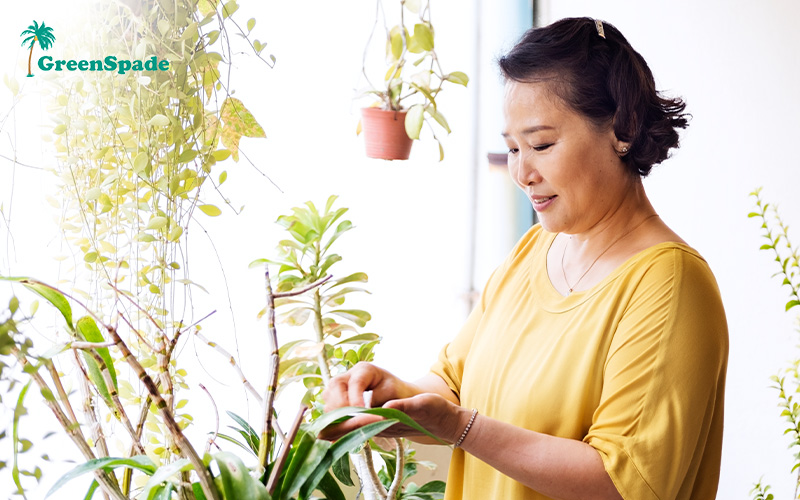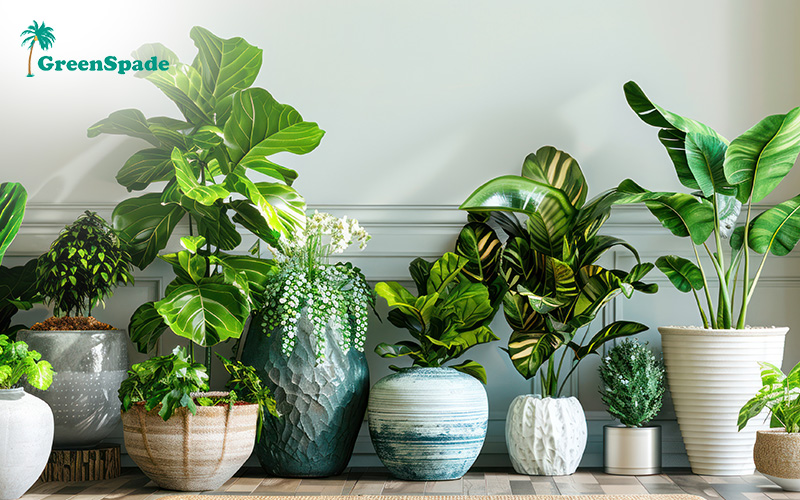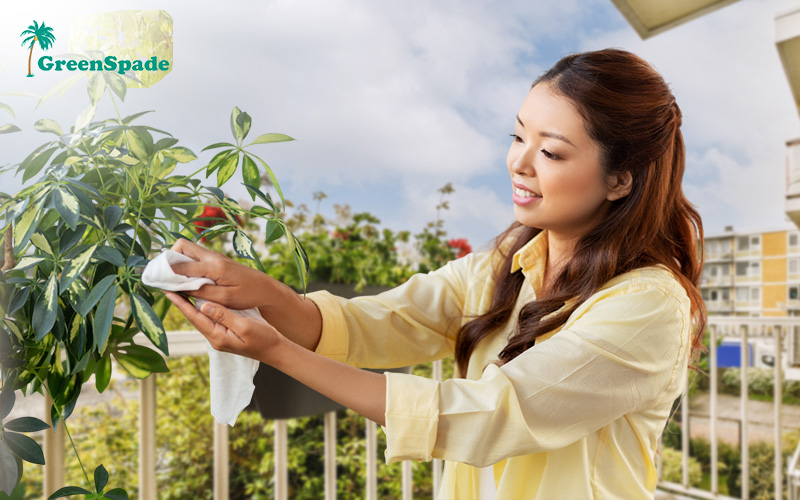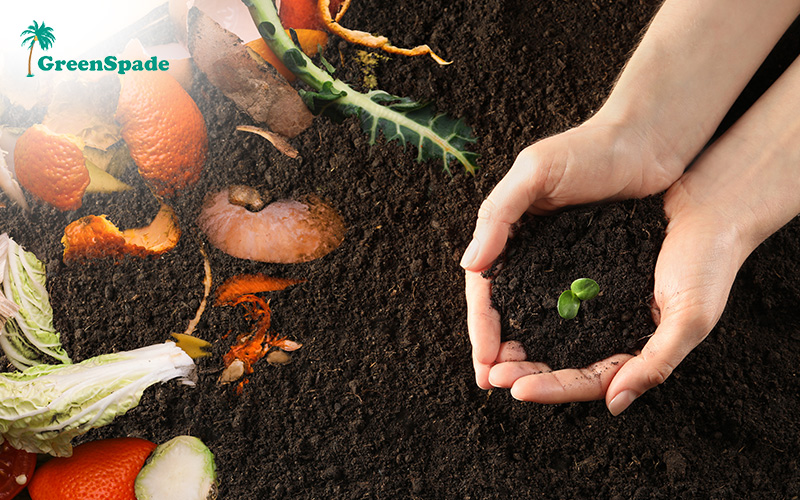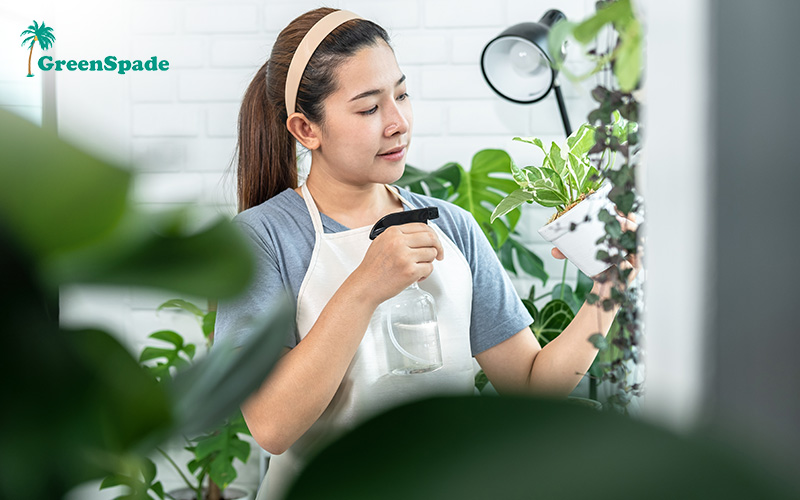Living in a compact apartment or home in Singapore often means giving up on certain hobbies—gardening being one of them. With no backyard or lawn, it might seem like growing your own herbs, flowers, or vegetables is out of reach. Maybe you’ve even scrolled through dreamy garden setups online, only to sigh at the sight of your tiny balcony or window ledge.
But here’s the good news: you don’t need a big backyard to enjoy the beauty and benefits of gardening. With a little creativity, even the smallest space can be transformed into a thriving, vibrant garden. Whether it’s a vertical herb wall in the kitchen, a row of succulents on your windowsill, or hanging planters on your balcony, mini gardens are a brilliant solution to maximising space while reconnecting with nature.
In this guide, we’ll walk you through everything you need to know to start your own beautiful mini garden, even in the most compact of homes. We’ll explore clever ways of maximising space, recommend must-have tools and containers and companion planting to take your garden to the next level. Whether you’re a first-time plant parent or a green-thumbed veteran looking to adapt to smaller quarters, there’s something here for you.
Let’s get growing!
Making the Most of Limited Space
One of the biggest challenges in starting a mini garden is, of course, space—or the lack of it. But limited square footage doesn’t have to mean limited creativity. With the right ideas and techniques, maximising space becomes not just a necessity, but a fun design challenge.
1. Vertical Gardening
This is one of the smartest ways to grow more with less. Instead of spreading your plants across the floor, think upwards. Use walls, fences, or trellises to support climbing plants like ivy, tomatoes, or even cucumbers. You can also install a vertical planter system with multiple shelves or pockets, each hosting a different herb or leafy green. Not only does this save ground space, but it also creates a stunning green wall that doubles as décor. When it comes to maximising space, vertical gardening is a game changer.
2. Hanging Planters
A stylish and simple option, hanging planters are perfect for balconies, patios, or even indoor corners. These planters dangle from the ceiling or sturdy beams and are ideal for trailing plants like pothos, ferns, or even herbs. By lifting your garden off the ground, you’re freeing up room below for other uses, great for maximising space while adding a touch of green at eye level. Plus, they sway gently with the breeze, bringing life and movement into your garden setup.
3. Windowsill Gardens
Often overlooked, windowsills can be transformed into productive little green strips. They’re perfect for growing herbs like basil, mint, or rosemary, plants that love sunlight and don’t need much room to grow. A few small pots lined up on a sunny ledge can turn any kitchen or bedroom window into a fragrant, functional garden. It’s an excellent example of maximising space in places you might not have thought of before.
4. Creative Containers
Forget matching pots, why not plant in a teacup, a colander, or an old wooden crate? Almost anything can be turned into a container garden as long as there’s proper drainage. These unique vessels not only add personality and charm, but they also allow you to use surfaces like bookshelves, steps, or coffee tables for planting. Creative containers are all about maximising space in style. They let your personality shine through while still serving a practical purpose.
Ultimately, the secret to a thriving mini garden is less about how much space you have and more about how you use it. Whether it’s going vertical, hanging from the ceiling, using windowsills, or getting inventive with containers, every little corner of your home has garden potential. With a bit of planning and creativity, maximising space becomes second nature, proving that even the smallest areas can grow something truly beautiful.
Essential Gardening Tools You Didn’t Know You Needed
After unlocking clever ways to work with your limited space, it’s time to arm yourself with the right tools to make your mini garden work. Just because you’re working in a compact area doesn’t mean you should struggle with oversized gear or traditional equipment. In fact, there’s a whole world of space-savvy tools designed specifically for modern, small-scale gardeners like you.
These clever gadgets aren’t just helpful, they’re handy must-haves when it comes to maximising space and simplifying the gardening process. Let’s take a look at some essentials you didn’t even know you needed.
1. Self-Watering Pots
Forget the guesswork and the constant need to water. Self-watering pots are here to save your plants and your schedule. These pots come with built-in water reservoirs that provide a steady supply of moisture to your plants over several days. Perfect for busy urbanites or forgetful gardeners, they reduce the need for daily maintenance. More importantly, they let you grow more plants in tighter spots without worrying about overwatering or runoff, another clever way of maximising space while keeping things neat and fuss-free.
2. Ergonomic Hand Tools
When you’re working in confined areas like balconies or windowsills, bulky tools just get in the way. That’s where ergonomic hand tools come in. These are small, lightweight, and specially designed to be comfortable even with extended use. Whether you’re transplanting seedlings or loosening soil in a tiny container, these tools give you precision and ease without hogging storage space. Think of them as the secret weapon for maximising space in both your garden and your tool kit.
3. Garden Kneeler & Seat
If you’ve ever tried kneeling on a hard balcony floor, you know it’s not exactly a comfy experience. A foldable garden kneeler that doubles as a seat is a total back-saver. Not only does it help you stay comfortable during longer planting sessions, but it also folds up neatly when not in use, great for maximising space in your storage area. Some even come with pockets or compartments to stash your tools, keeping everything tidy and within reach.
4. Plant Support Systems
For mini gardens that include climbing plants or tall flowers, plant support systems are a must. Options like vertical frames, stackable cages, or mini trellises help guide plant growth upwards rather than outwards. This not only keeps your garden looking organised but also plays a huge role in maximising space. Plus, giving your plants proper support can actually improve their health and yield, so it’s a win-win.
When it comes to small-space gardening, every inch counts and so does every tool. With the right equipment tailored to your space and needs, you can garden more efficiently, comfortably, and joyfully. These tools prove that maximising space doesn’t mean compromising on functionality. It just means getting a little smarter (and maybe a little more stylish) about how you grow.
Potting Perfection: Choosing the Right Containers
So, you’ve got your nifty tools in hand and your mini garden dreams are taking shape. Now it’s time to talk pots. Believe it or not, the type of container you choose can make or break your small garden setup. It’s not just about what looks cute on your balcony or windowsill (though that’s a bonus), it’s also about functionality, plant health, and of course, maximising space.
1. Choosing the Right Size
When it comes to containers, size really does matter. A pot that’s too small can stunt your plant’s growth, while one that’s too large might hog more room than necessary, definitely not ideal when you’re maximising space in a tiny area. Think of your pot as your plant’s personal studio apartment: it should be just roomy enough for roots to stretch, but not so large that your basil feels like it’s living in a mansion it can’t fill.
If you’re growing herbs or compact vegetables like radishes or lettuce, shallow containers work perfectly. But for deeper root veggies like carrots, go for taller pots. Choosing wisely ensures your plants thrive and you keep your setup compact.
2. Material Matters
Not all pots are created equal. Terracotta adds a rustic charm and allows soil to breathe, but they can dry out quickly and are a bit heavier. Plastic pots are lightweight and affordable, great for moving things around as you rearrange your garden layout. Fabric pots? Surprisingly amazing. They’re breathable, foldable, and ideal for root aeration. They’re fantastic for maximising space because they can be tucked into tight corners or grouped together easily.
Each material comes with pros and cons, so think about your plant’s needs, your aesthetic vibe, and how often you want to water.
3. Proper Drainage
Here’s something often overlooked: drainage. A container without proper drainage is basically a recipe for root rot. Even in the smallest spaces, make sure your pots have holes at the bottom, or drill some in if needed. You can even add a layer of pebbles to improve water flow without soaking the soil. Remember, healthy roots equals happy plants, and happy plants equals a thriving garden you’ll love coming home to.
4. Stackable and Modular Pots
Now, let’s level up, literally. Stackable and modular pots are the unsung heroes of small-space gardening. These clever designs let you build vertically, adding height to your setup without eating into your floor area. Whether it’s a tiered herb garden or a wall-mounted array of succulents, these systems are brilliant for maximising space with style.
Not only do they look cool, but they also let you grow more with less, less mess, less sprawl, and definitely less stress.
In the end, whether you opt for stackable pots or modular designs, these creative solutions allow you to grow more in less space, all while keeping your mini garden looking stylish and functional. Always remember, your plants will thrive when your containers are just right!
Companion Planting: Teamwork Makes the Garden Work
When you think of gardening, you might envision individual plants standing alone, each growing on its own. But what if your plants could actually team up to help each other out? This is the magic of companion planting, a gardening technique where certain plants are paired together for mutual benefit.
1. The Science of Companion Planting: How Plants Support Each Other
Plants are surprisingly social creatures! In companion planting, certain plants work in tandem, enhancing each other’s growth in several ways. For example, some plants may improve soil quality by fixing nitrogen or adding beneficial nutrients, while others can provide shade or act as natural pest repellents. Maximising space isn’t just about fitting more plants in; it’s about using plant relationships to increase overall productivity and health within your garden.
2.Best Companion Plants for Small Spaces
When you’re gardening in small spaces, choosing the right plant pairs is key. Some pairings thrive together and can even make the most of a tiny corner or windowsill. Take basil and tomatoes, for instance. Basil not only helps improve the flavour of tomatoes, but it also repels pests like mosquitoes and aphids that can harm your plants.
Another great pairing is marigolds and peppers, the marigolds act as a natural pest deterrent, while the peppers love the extra protection. These dynamic duos are perfect for maximising space, as you can plant them close together while reaping the benefits of their natural synergy.
3. Pest Control with Companion Plants
One of the most exciting aspects of companion planting is how certain plants can naturally ward off pests. For example, garlic is notorious for repelling aphids, while chives can keep away aphids, carrot flies, and even beetles. By introducing these protective plants, you can reduce the need for harmful chemicals, all while making the most of your limited space. With the right plant partners, you can maintain a pest-free garden without the hassle or cost of pesticides for plants, which is an excellent way to embrace sustainable gardening.
4. Fun and Unlikely Plant Pairings
If you want to have a little fun with your mini garden, why not try some quirky and unusual plant pairings? For instance, nasturtiums and cucumbers are a match made in gardening heaven. While the nasturtiums can help draw aphids away from the cucumbers, they also add a pop of colour to your space with their bright blooms. These unique plant pairings not only make small spaces work, but they also introduce a playful dynamic to your garden that’s both practical and fun.
By pairing plants that support each other, you’re not only creating a more efficient and productive garden, but you’re also making your small space even more exciting. Companion planting is the ultimate way to maximise space while promoting a healthy, sustainable, and vibrant garden, no matter how small.
Frequently Asked Questions
1. Can I create a mini garden if I have no outdoor space?
Absolutely! With creative solutions like vertical gardens, hanging planters, and windowsill gardens, you can bring nature indoors, even in the smallest spaces. Gardening tools designed for small spaces also make it easy to create a beautiful mini garden in apartments, balconies, or any area with limited space.
2. What are the best plants for a mini garden in a small apartment?
If you’re gardening in a small apartment, opt for plants that thrive in low light or in small containers. Herbs like basil, parsley, and mint are perfect for windowsills, while hardy houseplants like snake plants, pothos, and peace lilies can thrive in limited sunlight. Consider also adding small flowering plants or compact vegetable varieties to maximise your space.
3. How can I keep my plants healthy in a small space without overcrowding?
To prevent overcrowding, select the right-sized containers that allow your plants room to grow and consider using stackable or modular pots. Make sure each plant has adequate light, water, and airflow. Companion planting can also help maximise space and keep your mini garden healthy by pairing plants that benefit each other. Proper drainage is essential to avoid waterlogging and root rot.
4. Do I need special fertilisers for my mini garden?
While mini gardens don’t necessarily require special fertilisers, it’s important to choose the right type for the plants you’re growing. Opt for organic gardening products or slow-release fertilisers to provide consistent nutrients over time. Be mindful of over-fertilising, as smaller spaces often have less room for nutrient build-up. For potted plants, consider liquid fertilisers or plant food spikes that are easy to apply and won’t take up extra space.
Turn Limited Space into a Thriving Garden with Green Spade
Creating a mini garden is all about making the most of the space you have and turning it into a lush, productive, and beautiful green haven. From vertical gardening to creative containers and companion planting, there are countless ways to maximise space in your small garden while enjoying the many benefits of having plants at home. Whether you’re a busy urban dweller or simply working with limited space, these tips allow you to get creative, reduce clutter, and cultivate a thriving garden that fits your lifestyle.
Ready to start your own mini garden? At Green Spade, we specialise in helping you transform even the most limited spaces into stunning, functional gardens. Whether you’re a beginner or a seasoned gardener, we have everything you need to make your green dreams a reality. Visit us today for expert advice and all the gardening supplies and tools to bring your mini garden to life!

